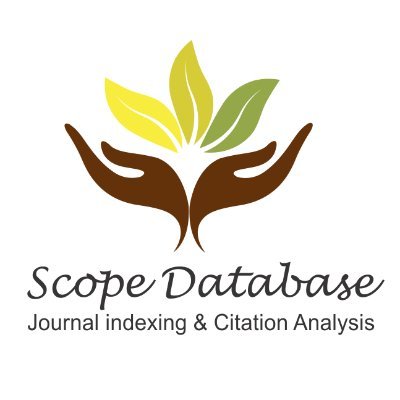Online version of a Theory of Mind test in Mexicans Versión en-línea de una prueba para evaluar la teoría de la mente en población mexicana
DOI:
https://doi.org/10.32654/ConCienciaEPG/Eds.especial-1Palabras clave:
Theory of Mind test, online test, mental states, eyes test.Resumen
The “Reading the Mind in the Eyes test” (RMET), also known as “The Eyes test”, is one of the most widely used tests to study Theory of Mind (ToM) and has been translated to several languages around the world. The aim of this study was to present an online version of the RMET designed for a Mexican population (Barrera-Valdivia et al., 2019) and to explore sex and age-related effects on the performance of the test. 1489 adults (1054 female, 71%) age 18 to 87 (M=30, SD=15) participated in the study. Participants were instructed to choose the word that best described what the person in each picture was feeling among four options. Stimuli consisted of full color images of 45 people’s eyes who expressed a variety of mental states. Results showed that 30 stimuli met the selection criteria: ≥50% selected on target and ≤25% on any of the foils. Average accuracy in response was 76% (SD= 11%) with observable differences by sex and age. Response accuracy allowed to classify stimuli into three difficulty levels (easy, intermediate, and difficult). Results showed that the online version of the RMET is an adequate assessment tool for ToM research in Mexican population as well as other Latin Americans communities that share cultural features.
Descargas
Citas
Adams Jr., R.B., Rule, N.O., Franklin Jr. R.G., Wang, E., Stevenson, M.T., Yoshikawa, S., Nomura, M., Sato, W., Kveraga, K., & Ambady, N. (2009). Cross - cultural Reading the Mind in the Eyes: An fMRI investigation. Journal of Cognitive Neuroscience 22(1),97-108. https://doi.org/10.1162/jocn.2009.21187
Adolphs R. (1999). Social Cognition and the Human Brain. Trends in Cognitive Sciences, 3(12), 469-479. https://doi.org/10.1016/S1364-6613(99)01399-6
Atenas, T. L., Ciampi Diaz, E., Venegas Bustos, J., Uribe San Martín, R., & Cárcamo Rodríguez, C. (2019). Cognición Social: Conceptos y Bases Neurales. Revista chilena de neuro-psiquiatría, 57(4), 365-376. https://doi.org/10.4067/S0717-92272019000400365
Baron-Cohen, S. Leslie, A. M., & Frith, U. (1985). Does the autistic child have a ‘theory of mind’? Cognition; 21(4), 37-46. https://doi.org/10.1016/0010-0277(85)90022-8
Baron-Cohen, S., O’Riordan, M., Stone, V., Jones, R., & Plaisted, K. (1999). Recognition of faux pas by normally developing children and children with Asperger syndrome or high-functioning autism. Journal of Autism and Developmental Disorders; 29(5) 407-18. https://doi.org/10.1023/A:1023035012436
Baron-Cohen, S., Wheelwright, S. & Jolliffe, T. (1997). Is there a ‘‘language of the eyes’’? Evidence from normal adults and adults with autism or Asperger syndrome, Visual Cognition 4(3), 311–331. https://doi.org/10.1080/713756761
Baron-Cohen, S., Wheelwright, S., Hill, J., Raste, Y. & Plumb. I. (2001). The ‘‘Reading the Mind in the Eyes’’ Test Revised Version: A Study with Normal Adults, and Adults with Asperger Syndrome or High-functioning Autism, The Journal of Child Psychology and Psychiatry and Allied Disciplines 42(2), 241-251. https://doi.org/10.1111/1469-7610.00715
Barrera-Valdivia, P., Méndez, R. V., Czyewska, M., Mendoza-Meraz, G., & Cordero-Hidalgo, A. (2019). Desarrollo de un instrumento para evaluar la empatía emocional en escolares mexicanos. Tecnociencia Chihuahua, 13(3), 149-156. https://vocero.uach.mx/index.php/tecnociencia/article/view/473
Bilder, R. M., Postal, K. S., Barisa, M., Aase, D. M., Cullum, C. M., Gillaspy, S. R., ... & Woodhouse, J. (2020). Inter Organizational Practice Committee recommendations/guidance for teleneuropsychology in response to the COVID-19 pandemic. Archives of Clinical Neuropsychology, 35(6), 647-659. https://doi.org/10.1093/arclin/acaa046
British Psychological Society (2020). Psychological assessment undertaken remotely. https://www.bps.org.uk/sites/www.bps.org.uk/files/Policy/Policy%20-%20Files/Psychological%20assessment%20undertaken%20remotely.pdf
Casler, K., Bickel, L., & Hackett, E. (2013). Separate but equal? A comparison of participants and data gathered via Amazon’s MTurk, social media, and face-to-face behavioral testing. Computer in Human Behavior. 29, 2156–2160. https://doi.org/10.1016/j.chb.2013.05.009
Chapman, L. J., & Chapman, J. P. (1978). The measurement of differential deficit. Journal of psychiatric research, 14(1-4), 303-311. https://www.bps.org.uk/sites/www.bps.org.uk/files/Policy/Policy%20-%20Files/Psychological%20assessment%20undertaken%20remotely.pdf
Charernboon, T. & Patumanond, J. (2017). Social cognition in schizophrenia. Mental Illness, 9(1), 16-19. https://doi.org/10.1108/mi.2017.7054
Craig, J. S., Hatton, C., Craig, F. B. & Bentall, R. P. (2004). Persecutory beliefs, attributions and theory of mind: Comparison of patients with paranoid delusions, Asperger's syndrome and healthy controls. Schizophrenia Research, 69(1), 29-33. https://doi.org/10.1016/S0920-9964(03)00154-3
Dziobek, I., Fleck, S., Kalbe, E., Rogers, K., Hassenstab, J., Brand, M., ... & Convit, A. (2006). Introducing MASC: a movie for the assessment of social cognition. Journal of Autism and Developmental Disorders, 36(5), 623-636. https://doi.org/10.1007/s10803-006-0107-0
Elfenbein, H.A. & Ambady, N. (2003). Universals and cultural differences in recognizing emotions. Current Directions in Psychological Science, 12(5), 159-164. https://doi.org/10.1111/1467-8721.01252
Elosua, P. (2020) Aplicación remonta de test: riesgos y recomendaciones. Papeles del psicólogo. 42 (1) 33 https://doi.org/10.23923/pap.psicol2021.2952
Ferguson, F. J., & Austin, E. J. (2010). Associations of trait and ability emotional intelligence with performance on Theory of Mind tasks in an adult sample. Personality and individual differences, 49(5), 414-418. https://doi.org/10.1016/j.paid.2010.04.009
Fernández, M., Mollinedo-Gajate, I., & Peñagarikano, O. (2018). Neural circuits for social cognition: implications for autism. Neuroscience, 370, 148-162. https://doi.org/10.1016/j.neuroscience.2017.07.013
Happé, F.G. (1994). An advanced test of theory of mind: understanding of story characters’ thoughts and feelings by able autistic, mentally handicapped, and normal children and adults. Journal of Autism and Developmental Disorders, 24(2), 129-54. https://doi.org/10.1007/BF02172093
Huerta-Ramos, E., Ferrer-Quintero, M., Gómez-Benito, J., González-Higueras, F., Cuadras, D., del Rey-Mejías, Á. L., ... & Ochoa, S. (2021). Traducción y validación del test de caras de Baron-Cohen en población española. Actas Espanolas de Psiquiatria, 49(3), 106-113. https://medes.com/publication/160545
International Test Commission (2017). The ITC Guidelines for Translating and Adapting Tests [Second edition]. InTestCom.org. https://www.intestcom.org/files/guideline_test_adaptation_2ed.pdf
Kittel, A. F. D., Olderbak, S., & Wilhelm, O. (2021). Sty in the Mind’s Eye: A Meta-Analytic Investigation of the Nomological Network and Internal Consistency of the “Reading the Mind in the Eyes” Test. Assessment, 1073191121996469. https://doi.org/10.1177/1073191121996469
Kirkland, R. A., Peterson, E., Baker, C. A., Miller, S., & Pulos, S. (2013). Meta-analysis Reveals Adult Female Superiority in" Reading the Mind in the Eyes Test". North American Journal of Psychology, 15(1),121-146. https://psycnet.apa.org/record/2013-09240-009
Lee, S., Jacobsen, E. P., Jia, Y., Snitz, B. E., Chang, C. C. H., & Ganguli, M. (2021). Reading the mind in the eyes: a population-based study of social cognition in older adults. The American Journal of Geriatric Psychiatry, 29(7), 634-642. https://doi.org/10.1016/j.jagp.2020.11.009
Lee, H. R., Nam, G., & Hur, J. W. (2020). Development and validation of the Korean version of the Reading the Mind in the Eyes Test. PLoS ONE, 15(8 August 2020). https://doi.org/10.1371/journal.pone.0238309
Maurage, P., Grynberg, D., Noël, X., Joassin, F., Hanak, C., Verbanck, P., ... & Philippot, P. (2011). The “Reading the Mind in the Eyes” test as a new way to explore complex emotions decoding in alcohol dependence. Psychiatry research, 190(2-3), 375-378. https://doi.org/10.1016/j.psychres.2011.06.015
Maureira Cid, F., Bravo Rojas, P., Ramírez Nahuelñir, M. A., & Fuentealba Colil, D. (2019). Baremos del coeficiente intelectual y la detección de la expresión emocional a través de la mirada en estudiantes de educación física de Santiago de Chile. Revista Electrónica de Psicología Iztacala, 22(1), 46-57. http://www.revistas.unam.mx/index.php/repi/article/view/68969
Moor, B. G., de Macks, Z. A. O., Güroğlu, B., Rombouts, S. A., Van der Molen, M. W., & Crone, E. A. (2012). Neurodevelopmental changes of reading the mind in the eyes. Social cognitive and affective neuroscience, 7(1), 44-52.
https://doi.org/10.1093/scan/nsr020
Nejati, V. (2018). Negative interpretation of social cue in depression: Evidence from reading mind from eyes test. Neurology, Psychiatry and Brain Research, 27, 12-16. https://doi.org/10.1016/j.npbr.2017.11.001
O’Keeffe, K., Hodder, S., & Lloyd, A. (2020). A comparison of methods used for inducing mental fatigue in performance research: Individualised, dual-task and short duration cognitive tests are most effective. Ergonomics, 63(1), 1-12. https://doi.org/10.1080/00140139.2019.1687940
Olderbak, S., Wilhelm, O., Olaru, G., Geiger, M., Brenneman, M. W., & Roberts, R. D. (2015). A psychometric analysis of the reading the mind in the eyes test: toward a brief form for research and applied settings. Frontiers in Psychology, 0(OCT), 1503. https://doi.org/10.3389/FPSYG.2015.01503
Pfaltz, M. C., McAleese, S., Saladin, A., Meyer, A. H., Stoecklin, M., Opwis, K., & Martin-Soelch, C. (2013). The Reading the Mind in the Eyes Test: Test-retest reliability and preliminary psychometric properties of the German version. International Journal of Advances in Psychology, 2(1), 1-9. https://doi.org/10.5167/uzh-87335
Peñuelas-Calvo, I., Sareen, A., Sevilla-Llewellyn-Jones, J., & Fernández-Berrocal, P. (2019). The “Reading the Mind in the Eyes” test in autism-spectrum disorders comparison with healthy controls: a systematic review and meta-analysis. Journal of Autism and Developmental Disorders, 49(3), 1048-1061. https://doi.org/10.1007/s10803-018-3814-4
Premack, D., & Woodruff, G. (1978). Does the chimpanzee have a theory of mind? Behavioral and Brain Sciences, 1(4), 515-526. http://dx.doi.org/10.5579/rnl.2012.0108
Roman, N., Rojas, G. & Román, N. (2012). Baremos del test de la mirada en español en adultos normales de Buenos Aires, Neuropsicología Latinoamericana, 4(3), 1-5. http://dx.doi.org/10.5579/rnl.2012.0108
Shamay-Tsoory, S. G., & Aharon-Peretz, J. (2007). Dissociable prefrontal networks for cognitive and affective theory of mind: a lesion study. Neuropsychologia, 45(13), 3054-3067. https://doi.org/10.1016/j.neuropsychologia.2007.05.021
Torralva, T., Roca, M., Gleichgerrcht, E., Bekinschtein, T., & Manes, F. (2009). A neuropsychological battery to detect specific executive and social cognitive impairments in early frontotemporal dementia. Brain, 132(5), 1299-1309. https://doi.org/10.1093/brain/awp041
Van Cutsem, J., K. De Pauw, L. Buyse, S. Marcora, R. Meeusen, and B. Roelands. (2017). “Effects of Mental Fatigue on Endurance Performance in the Heat.” Medicine and Science in Sports and Exercise 49(8): 1677–1687. doi: 10.1249/MSS.0000000000001263.
Van Overwalle, F. (2009). Social cognition and the brain: a meta‐analysis. Human brain mapping, 30(3), 829-858. https://doi.org/10.1002/hbm.20547
Wellman, H. M., Cross, D., & Watson, J. (2001). Meta-analysis of theory-of-mind development: the truth about false belief. Child Development; 72(3), 655-84. https://doi.org/10.1111/1467-8624.00304
Wimmer, H. & Perner, J. (1983). Beliefs about beliefs: representation and the constraining function of wrong beliefs in young children’s understanding of deception. Cognition, 13(1), 103-28. https://doi.org/10.1016/0010-0277(83)90004-5
Descargas
Publicado
Cómo citar
Número
Sección
Licencia
Derechos de autor 2022 Revista ConCiencia EPG

Esta obra está bajo una licencia internacional Creative Commons Atribución-NoComercial 4.0.



























